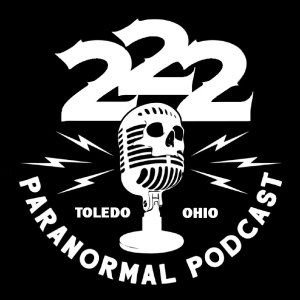
ParaPsyCon at Ohio State Reformatory with Matt Slys haunted adventures Eps. 412
 2024-05-26
2024-05-26
Please hit Subscribe and leave a positive comment.
Click here to go to Our website.
Click here to go to our Patreon Page.
Click here for the Ohio State reformatory.
Click her to save on clothing and home goods.
(jen put in somthing like "re retun to the most haunted prison, and talk with matt)
Matt Slys is a DJ for WOBL/WDLW-Host of The Magical Mystery Hour. Also an Investigator with 111 Paranormal.
Today’s Ohio State Reformatory
The Mansfield Reformatory Preservation Society is a non-profit overseen by a volunteer Board and every donation goes directly to the maintenance and restoration of the building.
The Reformatory houses the official Ohio State Corrections History Museum, is a popular site for ghost hunters and paranormal enthusiasts, hosts numerous special events, and as of 2018 welcomes more than 120,000 visitors per year.
The building’s striking architecture is a favorite choice for filmmakers. A number of films and music videos have been made at OSR over the years, with The Shawshank Redemption as the best known and most widely loved. Other films include: Harry and Walter Go to New York, Tango and Cash, Air Force One, Escape Plan: The Extractors and Judas and the Black Messiah.
Design and Construction
The Ohio State Reformatory was designed by Cleveland architect Levi Scofield. Scofield designed the striking limestone building to be an uplifting, inspiring, and intimidating structure. The Reformatory was originally called the “Intermediate Penitentiary” since it accepted inmates who were too old for juvenile corrections but had committed offenses more minor than those that sent others to the Ohio State Penitentiary. The facility admitted its first inmates in 1896 after ten years of construction.
Reformation and Rehabilitation
The goal of the institution was truly to “reform” and rehabilitate its inmates, who received three things during their time at OSR: religion, education, and a trade. Inmates were admitted for 18 months, and if they showed progress, they could be released after that time. If not, they received another 18 months. The model was successful and OSR had a high success rate and a low recidivism rate.
More Episodes
 2024-10-20
2024-10-20
 2024-09-01
2024-09-01
Create your
podcast in
minutes
- Full-featured podcast site
- Unlimited storage and bandwidth
- Comprehensive podcast stats
- Distribute to Apple Podcasts, Spotify, and more
- Make money with your podcast
It is Free
- Privacy Policy
- Cookie Policy
- Terms of Use
- Consent Preferences
- Copyright © 2015-2024 Podbean.com





